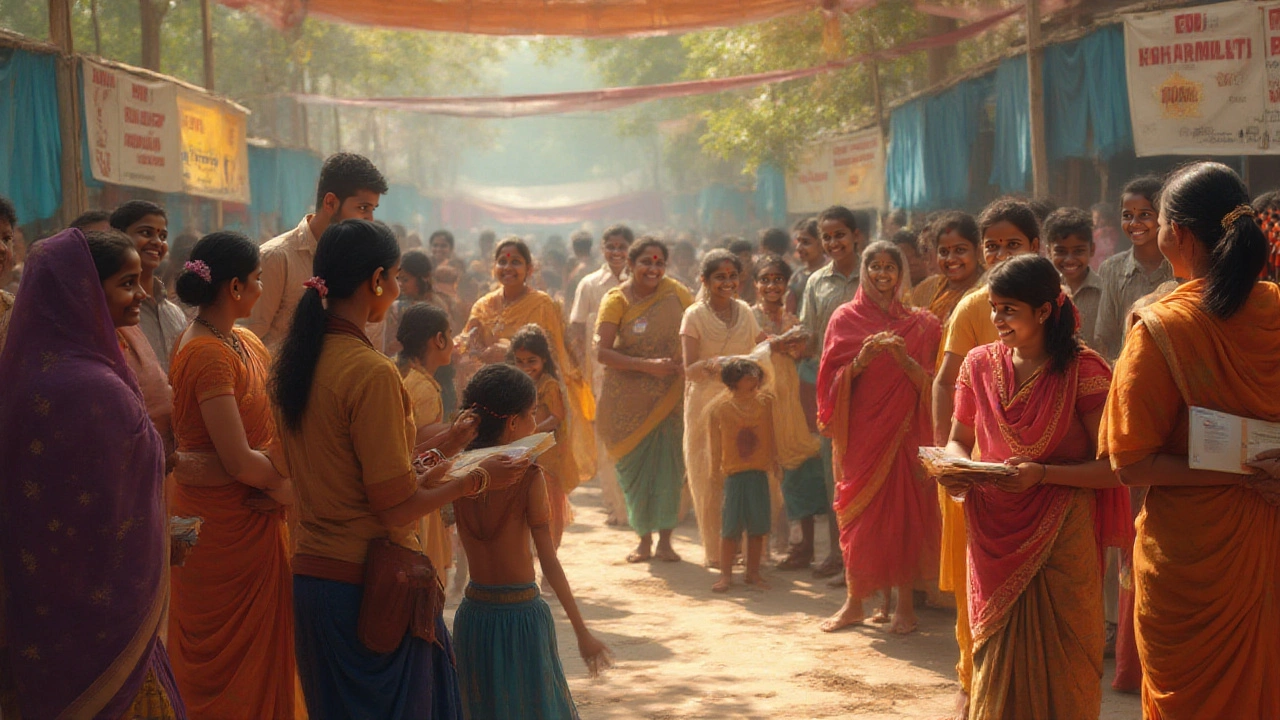Top-Rated Charities: Who Has the Best Charity Ratings in 2025?
 Aug, 2 2025
Aug, 2 2025
Would you trust your hard-earned money with a stranger wearing a fancy suit and a wide smile? Probably not. Yet when it comes to donating to charity, that’s exactly what most people do every day. Maybe it's a text from an animal rescue, a bushfire appeal splashed across your socials, or a local kids’ club holding a charity sausage sizzle at Bunnings. But how do you know if your donation goes where you intend, or if it’s just swallowed up by admin fees or flashy ad campaigns?
Millions of people toss coins (or tap cards) without cross-checking a thing. Some assume all charities do good work. The reality? Not every one is as angelic as the marketing. It can get messy. Some charities spend over 30% on fundraising; some have execs earning millions; and some quietly do life-changing work and rarely get noticed. Australians alone gave around $13.4 billion in 2024, according to Philanthropy Australia, but who got the top marks? Where’s your donation safest? Let's look at the tools, ratings, and real winners of the charity world right now—so your generosity doesn’t get wasted.
How Are Charities Rated? Understanding the Scoreboard
Imagine handing over your credit card to a builder before seeing any blueprints. Sounds risky, right? That’s where charity ratings come in. Instead of making a leap of faith, you can check a charity’s game plan before you donate a dollar. Independent watchdogs do the heavy lifting: they comb through financial reports, dig into how each dollar is spent, and rate transparency and outcomes. Some of the big names: Charity Navigator (US), GiveWell (US/global), GuideStar (global data aggregator), and in Australia, the Australian Charities and Not-for-profits Commission (ACNC) and Good2Give.
So, what are these ratings based on? It’s not just one thing. Some key factors:
- Financial Efficiency: How much of each donation goes to actual programs, not admin or fundraising?
- Transparency & Governance: Is there public, easy-to-understand reporting? Any signs of dodgy dealings?
- Impact: Are they showing real, measurable change?
- Accountability: Can supporters clearly see what’s being achieved?
This is usually visual—think gold/silver/bronze or 1–4 stars. For example, Charity Navigator’s ultimate badge is a 4-star rating. They judge over 10,000 US (and some international) charities using more than 20 data points—including how much is spent on cause versus overheads, how stable finances look, and how open they are about leadership.
Transparency doesn’t mean perfection, but it does mean you can dig for answers. The ACNC here in Australia now makes annual reports, directors’ info, and basic finances public for every registered charity. If you’re curious, you can search the register in minutes—no degree needed.
Some watchdogs even check CEO pay, lawsuits, or negative press. For example, GiveWell tends to highlight just a handful of “top charities” with deep, independent evidence of cost-effective impact. Their bar is so high most organisations don’t even make the list.
Here’s a quick grab of how ratings break down:
| Watchdog | Country/Region | Top Rating | Key Criteria |
|---|---|---|---|
| Charity Navigator | US/Global | 4 stars | Financial health, transparency, accountability |
| GuideStar | Global | Platinum Seal | Openness, results reporting |
| GiveWell | US/Global | Top Charity | Cost-effectiveness, evidence, transparency |
| ACNC | Australia | Registered | Compliance, public benefit, transparency |
If you want to dig even deeper, check Good2Give (Australia) and GiveWell (global impact) for extra data and user-friendly explainer tools.

Who Actually Has the Highest Rating? The Standouts of 2025
Searching for the perfect charity sometimes feels like hunting for buried treasure—you know it must be out there, but it’s hard to spot among all the pretty shells. According to recent data, only a handful of organisations achieve the top badges year after year. Charity Navigator, for instance, gave just 23% of its rated charities four stars in 2024, meaning they’re the cream of the crop for efficiency and honesty.
Let’s get specific. Here’s who’s nailing the highest marks right now:
- Direct Relief: Absolutely smashes the rankings. For the tenth year running, they’re a 4-star, platinum-level charity (Charity Navigator and GuideStar both agree). Over 99% of spending goes directly to medical aid—admin and fundraising barely register. In 2024, they moved billions in COVID response, Ukraine relief, and local crises, but their admin costs hovered around just 0.6%.
- Fred Hollows Foundation (Australia): A regular feature in GiveWell and Good2Give’s top list for tackling preventable blindness. They direct more than 75 cents of every dollar to projects (ACNC public records), and ongoing impact reports show around 2.5 million people have had their sight restored since 1992.
- Against Malaria Foundation (GiveWell Top Charity): Consistently ranked #1 by global researchers for cost-effectiveness, mainly due to cheap, life-saving mosquito nets. Over 90% of donations fund the nets, and every batch is trackable online—so your $5 genuinely covers a family’s net, not office rent.
- Starlight Children’s Foundation Australia: In the eyes of the ACNC, Starlight has met all compliance requirements and recently received ‘Excellent’ for governance. They spend upwards of 74% directly on kids’ programs, as reported in the 2024 annual financials.
- World Wildlife Fund (WWF): The Australian arm holds a perennial 4-star rating from Good2Give and registers at the platinum mark on GuideStar. The last review shows 80% of money spent on core animal and climate initiatives.
If you’re wondering about household names—Red Cross, Salvation Army, Oxfam—they score well for effectiveness and emergency reach, but sometimes draw lower marks for fundraising costs or complex overheads (think warehouses, transport, big campaigns).
What about actual impact? For medical aid, Direct Relief and The Fred Hollows Foundation lead. For poverty, look at GiveDirectly, which sends funds directly to people in need (ranked most cost-effective cash transfer by GiveWell). For global health, Against Malaria Foundation beats most on both evidence and admin spending. Locally in Australia, charities like Indigenous Literacy Foundation and Foodbank also make the watchlists, especially for practical, documented change in communities.
| Charity | 2025 Rating | Admin Costs (%) | Main Impact Area |
|---|---|---|---|
| Direct Relief | 4 stars (CN) | 0.6 | Medical Aid |
| Fred Hollows Foundation | GiveWell Top | ~24 | Sight-restoring Surgery |
| Against Malaria Foundation | GiveWell Top | <10 | Malaria Prevention |
| Starlight Children's Foundation | Excellent (ACNC) | ~26 | Kids' Health & Well-being |
| WWF Australia | 4 stars (Good2Give) | ~20 | Conservation |
Notice none are perfect—their admin/outreach costs vary, but they all show high marks in honesty, efficiency, and results. That’s the sweet spot you want.

How to Make Sure Your Donation Makes a Difference
Ever had that little worry after clicking 'donate'—where did my twenty bucks actually go? It’s not just you. Most people don’t track their donations and wouldn’t even spot if a charity wandered off course. But there are some easy tricks to dodge the dodgy and make sure your money lands with a big splash, not a tiny ripple.
Here’s how you can do your own charity sleuthing like a pro:
- Check their rating: Start with Charity Navigator, GiveWell, ACNC, or GuideStar to see if the charity passes the gold-standard smell test. Look for at least three stars, a ‘top’ badge, or recent awards for transparency.
- Read a recent annual report: All good charities post one. Look for clear details on how funds are spent, not just fluffy stories or staged photos. If you can’t find spend breakdowns, walk away.
- Google the CEO’s pay: Most top-rated outfits are upfront. If the leader’s making a million a year, dig deeper for an explanation. Sometimes big pay matches big impact, but not always.
- Follow the money trail: The highest rated charity will almost always show their admin costs, fundraising totals, and direct program spending right on their website. The best ones love transparency.
- Avoid impulse gifts: If you feel guilted by a street collector or a social media sob story, pause and fact-check before opening your wallet. Scams thrive on emotion—slow down, research, then give generously.
- Donate directly: Skip the middleman where you can. Use the charity’s own donate page so your dollars aren’t drained by payment processors or third-party fees.
- Track what matters to you: Some people love animal rescue, some want to tackle global poverty, some want to support local outreach. Pick your passion—but still check the numbers.
- Don’t get stuck on charity size: Small, local causes can be just as brilliant as global giants, but they might not appear in every rating table. Use the ACNC’s registry (for Aussies) or GuideStar for more detail.
If you feel overwhelmed, try GiveWell’s top-charities list as a shortcut (they usually name just 4–6 per year), or sort Charity Navigator high to low for four-star organisations. Even a five-minute background check blows most ‘gut feeling’ choices out of the water.
Another trick—if you prefer ongoing support, set up a monthly micro-donation. It’s easier for you, and charities love predictable income. For bigger gifts, call or email to ask about exactly where your gift will go or how you can track its use. Most top charities have donor care teams ready to answer any question you can throw at them.
And if something smells off—a sudden appeal with no history, an urgent call for crypto, or no way to contact them besides a Gmail account—run, don’t walk. The best charities are open, responsive, and generous with details. Anything else? It’s probably not worth your time or your support.
Choosing where to give can feel risky, but with watchdogs and open data, today there’s really no reason to fly blind. Stick with the four-star, platinum, or top-recommended groups, and your support can be a force multiplier. Suddenly, that sausage sizzle or $20 digital tip might just change lives—exactly how you meant it to.